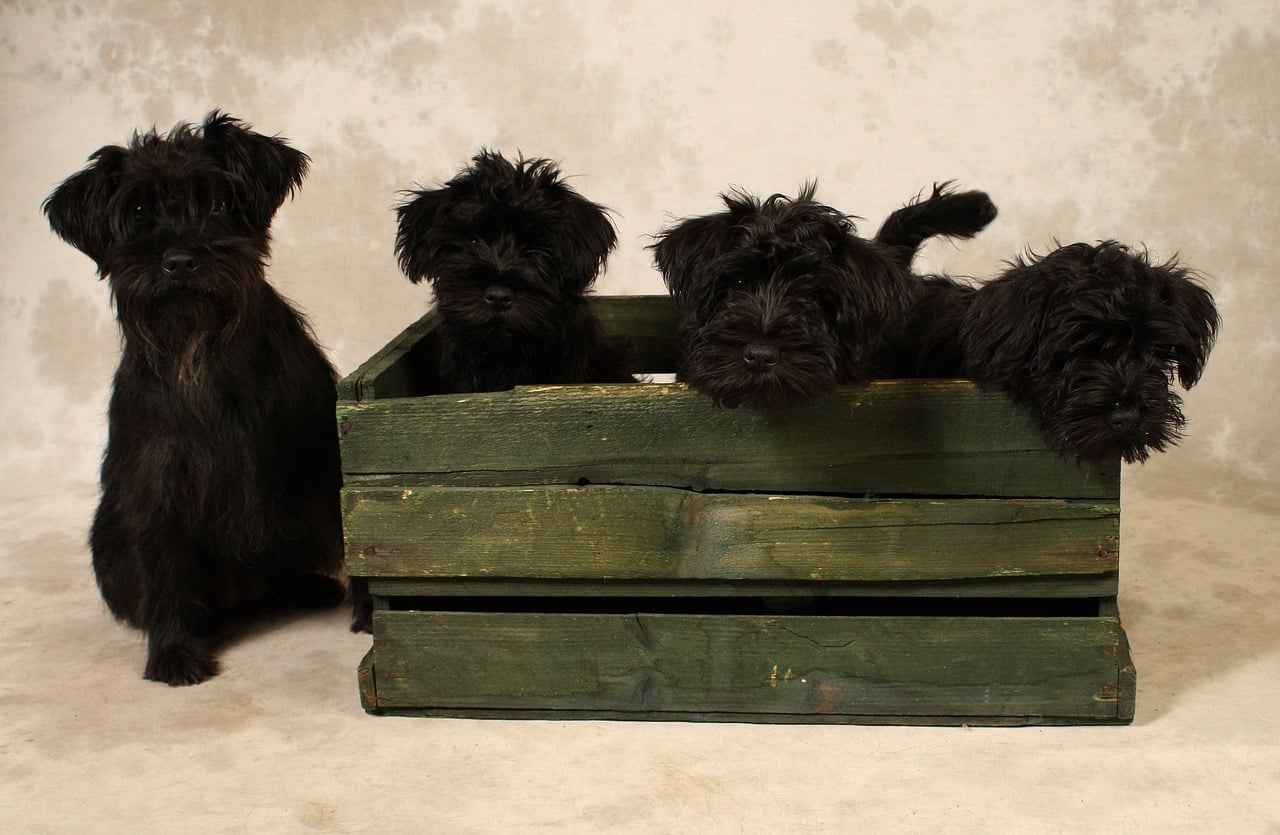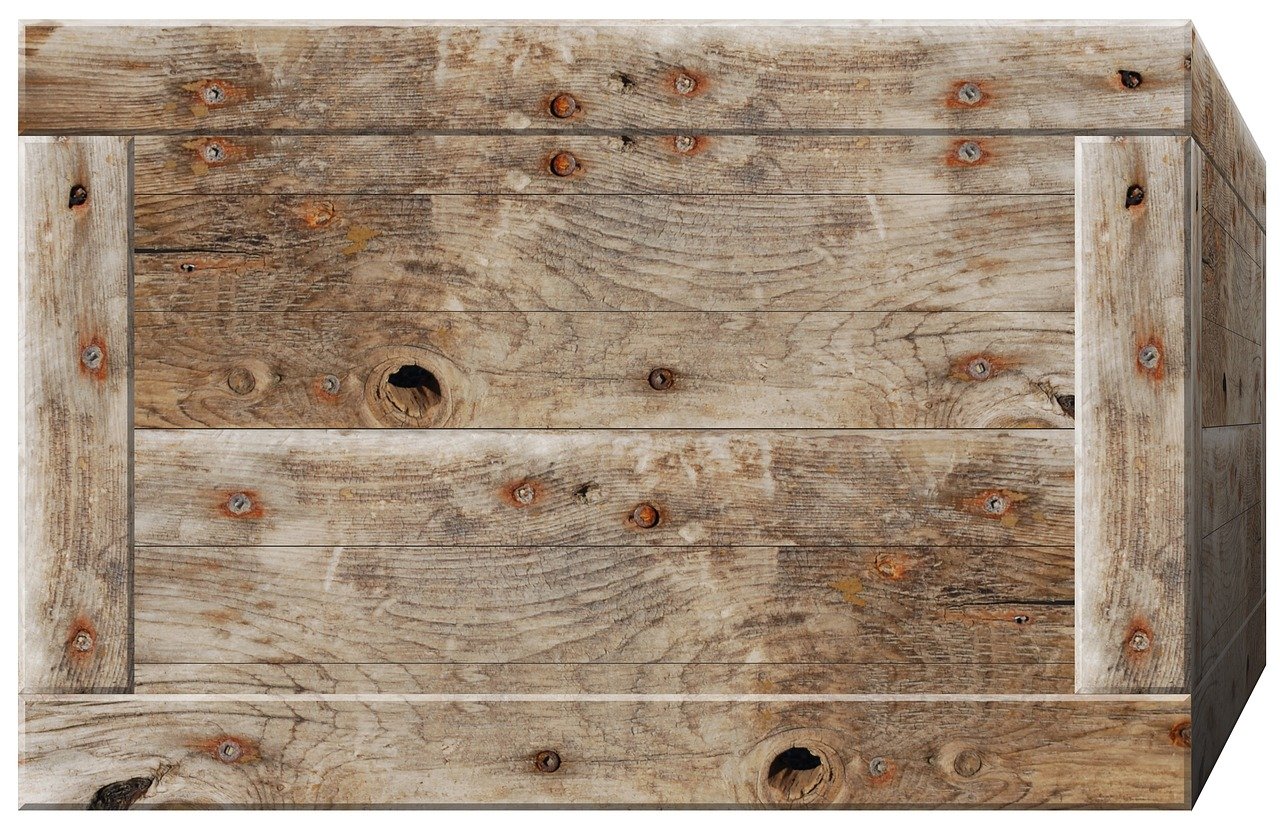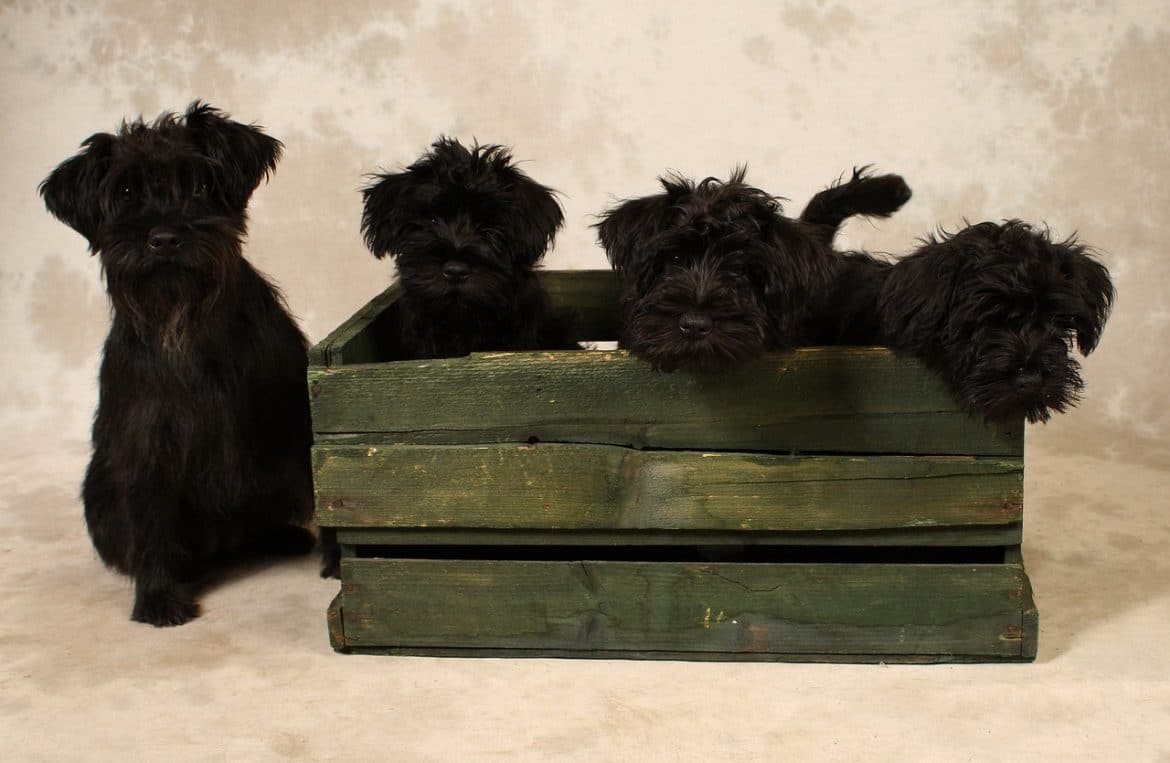If you're a dog owner who has recently adopted an older dog and is considering crate training, then this article is for you. Crate training can be a useful tool for helping your older dog feel safe and secure, whether at home or while traveling. In this article, you will find some valuable tips and techniques to make the crate training process a positive and stress-free experience for both you and your furry companion.

This image is property of pixabay.com.
Preparing the Crate
Choose the right size crate
When it comes to crate training an older dog, one of the most important factors is selecting the right size crate. The crate should be large enough for your dog to stand up, turn around, and lie down comfortably. If the crate is too small, your dog may feel cramped and anxious. Conversely, if the crate is too large, your dog may not feel secure. Take note of your dog's size and consider their future growth before purchasing a crate.
Make the crate comfortable
To encourage your older dog to view the crate as a safe and cozy space, it's important to make it comfortable. Line the bottom of the crate with a soft blanket or bed that your dog finds inviting. Adding a favorite toy or a familiar scent, such as an item of clothing with your scent on it, can also help create a positive association with the crate.
Place it in a quiet area
Finding the right location for your dog's crate is equally crucial. Dogs need a peaceful environment to relax and retreat to, so it's best to place the crate in a quiet area of your home where there is minimal foot traffic and noise. This will help your older dog feel more at ease and reduce distractions that may hinder the crate training process.
Introducing the Crate
Allow the dog to explore the crate
Once the crate is prepared, it's time to introduce it to your older dog. Allow them to freely explore the crate at their own pace. Avoid forcing them inside or closing the door at this stage. Let your dog familiarize themselves with the crate, sniffing and investigating it. This will help them feel more comfortable and establish a positive association with the crate.
Use positive reinforcement
Positive reinforcement is a powerful tool when it comes to crate training an older dog. Whenever your dog shows interest in the crate or willingly enters it, praise and reward them with treats or gentle words of encouragement. This will help them associate the crate with positive experiences and strengthen their willingness to enter it voluntarily.
Feed meals near the crate
Another effective method for creating positive associations with the crate is to feed your dog their meals near the crate. Place their food bowl just outside the crate, gradually moving it closer with each meal. Eventually, your older dog will begin associating mealtime with the crate, making it a more appealing and comfortable place for them to be.
Creating Positive Associations
Make the crate a positive place
As you continue with the crate training process, it's crucial to make the crate a positive and rewarding place for your older dog. Incorporate their favorite toys, treats, and blankets into the crate to create a comforting and enjoyable environment. Encourage your dog to spend time in the crate with enticing toys or chews. This will help them view the crate as their own special den, rather than a place of confinement.
Use treats and toys to encourage entry
Using treats and toys can be a highly effective way to encourage your older dog to enter the crate willingly. Start by placing treats or toys near the crate and gradually move them inside. As your dog becomes more comfortable, place the treats or toys further inside the crate. This will incentivize your dog to enter the crate and spend time there willingly.
Associate the crate with relaxation
One of the key goals of crate training is to help your dog associate the crate with relaxation and a sense of security. Introduce calming activities in or around the crate, such as playing soft classical music or using pheromone diffusers to create a soothing atmosphere. By providing a peaceful environment, your older dog will gradually learn to associate the crate with relaxation and a space for downtime.
Gradual Introduction
Start with short periods in the crate
Initially, start by keeping your older dog inside the crate for short periods throughout the day. Begin with just a few minutes and gradually increase the duration over time. This gradual approach allows your dog to acclimate to being in the crate and reduces the likelihood of them becoming anxious or distressed.
Increase the time gradually
Once your older dog is comfortable spending short periods inside the crate, gradually increase the length of time they spend inside. Extend the duration in increments that are manageable for your specific dog. Avoid rushing the process as it may overwhelm your dog and hinder their progress. Remember, patience is essential during this stage of crate training.
Monitor the dog's response
Throughout the gradual introduction process, it's crucial to closely monitor your older dog's response to being in the crate. Pay attention to their body language, including signs of stress or anxiety. If you notice any signs of distress, such as excessive panting, pacing, or whining, it may be an indication that you need to slow down and provide additional support.

This image is property of pixabay.com.
Establishing a Routine
Set a consistent schedule
Establishing a consistent schedule is key to successful crate training. Dogs thrive on routine, so aim to provide them with a predictable daily routine that includes crate time. Set specific times for your dog's meals, exercise, and crate time. This routine will help your older dog feel secure and understand what is expected of them.
Use cues to signal crate time
Using cues is an effective way to communicate with your older dog when it's crate time. Choose a word or phrase, such as "crate time" or "go to your den," and consistently use it before directing your dog into the crate. Over time, your dog will associate the cue with the action of entering the crate and become more responsive to it.
Provide exercise before crate time
Before placing your older dog in the crate, ensure they have received adequate exercise and mental stimulation. Taking your dog for a walk or engaging in playtime prior to crate time will help release excess energy and make them more likely to relax in the crate. A tired dog is often a calmer dog, making crate training easier for both of you.
Dealing with Anxiety and Fear
Address separation anxiety
Some older dogs may experience separation anxiety when initially crate training. Separation anxiety can manifest as excessive whining, barking, or destructive behavior when left alone. If your older dog shows signs of separation anxiety, it's important to address it before proceeding with crate training. Gradual desensitization and counterconditioning techniques, along with professional guidance if needed, can help alleviate separation anxiety.
Use desensitization techniques
For older dogs with anxiety or fear towards the crate, desensitization techniques can be beneficial. The goal of desensitization is to gradually expose your dog to the crate in a way that reduces their fear or anxiety. Start by placing treats or toys near the crate, gradually moving them closer until your dog is comfortable being near it. Gradually work up to having your dog enter and stay inside the crate without displaying signs of distress.
Consult a professional if necessary
If you're struggling with crate training an older dog who exhibits severe anxiety or fear, it may be necessary to consult a professional dog trainer or behaviorist. These experts can provide tailored guidance and support based on your dog's specific needs. Remember, seeking professional help is not a sign of failure but rather a proactive step towards ensuring your older dog's well-being.

This image is property of pixabay.com.
Avoiding Punishment
Never use the crate as a form of punishment
Crate training should always be associated with positive experiences for your older dog. Never use the crate as a form of punishment, as this can create negative associations and hinder the training process. The crate should be seen as a safe and comforting space for your dog, not a place of confinement or isolation as a result of misbehavior.
Avoid forcing the dog into the crate
Forcing your older dog into the crate can damage the trust and progress you've made during the training process. It's important to allow your dog to enter the crate willingly and associate it with positive experiences. Forcing your dog may lead to increased resistance, fear, or anxiety towards the crate. Patience, positive reinforcement, and a gentle approach are essential for successful crate training.
Stay calm and patient
Crate training an older dog can be a challenging process that requires patience and persistence. It's important to remain calm and avoid becoming frustrated or upset during the training sessions. Your older dog can pick up on your emotions, so it's crucial to create a positive and relaxed atmosphere. Remember, crate training takes time, and each dog progresses at their own pace.
Troubleshooting
Address any accidents calmly
Accidents may happen during the crate training process, especially with older dogs who may have less control over their bladder. It's important to address any accidents calmly and without scolding your dog. Clean up any messes using a pet-friendly cleaner and avoid using harsh chemicals that may leave residual odors. Take note of accidents and adjust your training approach as needed, ensuring your older dog has ample opportunity to eliminate outside of the crate.
Adjust the crate setup if needed
If your older dog continues to show signs of discomfort or distress in the crate, adjust the setup as necessary. Experiment with different bedding materials, crate sizes, or even crate covers to create a more inviting and secure environment. Every dog is unique, and finding the right setup may require some trial and error. Stay observant of your dog's behavior and make adjustments accordingly.
Seek professional help if issues persist
If you're experiencing persistent difficulties with crate training an older dog, despite your best efforts, don't hesitate to seek professional help. A professional dog trainer or behaviorist can assess your dog's specific situation and provide tailored guidance to overcome any challenges. They can help troubleshoot problem areas, offer alternative training approaches, and empower you to effectively crate train your older dog.
Building Confidence
Provide mental stimulation and enrichment
In addition to crate training, it's important to provide your older dog with mental stimulation and enrichment to build their confidence. Engage in interactive play sessions, provide puzzle toys, and introduce new training exercises to keep their minds active and engaged. A mentally stimulated dog is more likely to feel confident and comfortable in the crate.
Reward calm behavior outside the crate
Rewarding calm behavior outside the crate is an important aspect of crate training an older dog. When your dog demonstrates calm behavior, such as relaxing or lying down quietly outside of crate time, provide praise, treats, or affection. This reinforces the idea that being calm is desirable, both inside and outside of the crate.
Foster a positive environment
Creating a positive environment for your older dog is essential for their overall well-being and successful crate training. Ensure they have access to fresh water, a comfortable resting area, and opportunities for social interaction throughout the day. A supportive and positive environment will help your dog feel secure and content, contributing to their progress in crate training.
Celebrating Progress
Acknowledge and reward milestones
As your older dog makes progress in crate training, it's important to acknowledge and reward their milestones. Celebrate each step towards success, whether it's voluntarily entering the crate, staying inside for longer periods, or displaying calm behavior while inside. Positive reinforcement, such as treats, praise, or extra playtime, will motivate your dog and reinforce the behaviors you desire.
Gradually increase freedom outside the crate
Once your older dog consistently exhibits good behavior and comfort in the crate, you can gradually increase their freedom outside. Begin with short supervised periods outside the crate, gradually lengthening the duration as your dog continues to meet expectations. This gradual increase in freedom will help reinforce their positive training and provide opportunities for them to prove their reliability.
Maintain a positive attitude
Throughout the entire crate training process, it's crucial to maintain a positive attitude. Your older dog is highly attuned to your emotions and energy, so adopting a positive and encouraging demeanor will have a profound impact on their progress. Embrace the journey, stay patient, and remember to celebrate even the smallest successes. With time, consistency, and your unwavering support, your older dog will become comfortable and content in their crate.


